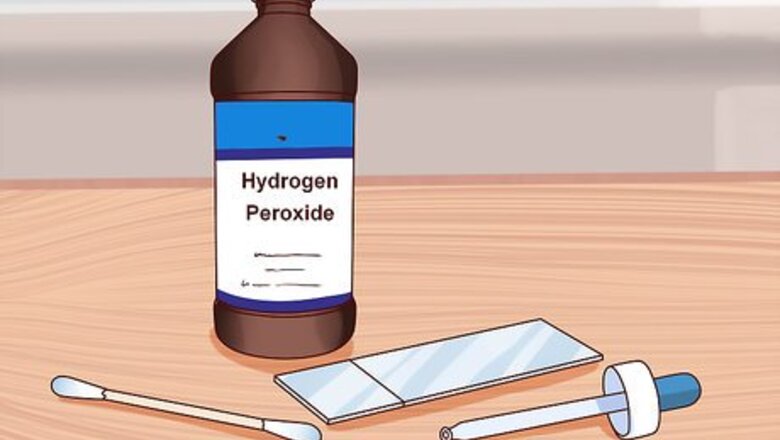
views
X
Research source
These tests are the first step in determining if there is blood present.
Using the Catalase Test
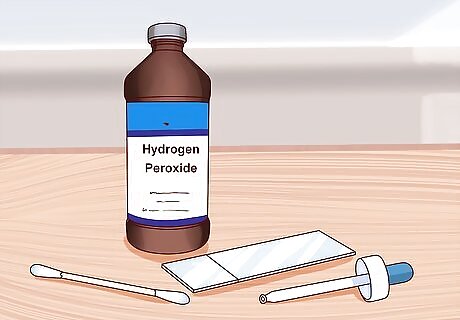
Gather the necessary materials. In this experiment, you will be testing for the presence of catalase using hydrogen peroxide. Catalase is an enzyme in your cells that converts hydrogen peroxide into pure oxygen and water, causing a foaming action to occur. To use this test, you will need hydrogen peroxide, a microscope slide, a cotton swab, a small eyedropper, gloves, and the blood sample to test. Standard 3% hydrogen peroxide found at the store works fine. Always wear gloves when handling any solutions you believe to be biological, such as blood.

Prepare your blood sample. For this test, you need to place a little bit of the blood sample on the microscope slide. Using the cotton swab, smear a generous amount of the sample across the slide. The exact amount doesn’t matter, but the more blood you test, the greater the reaction will be. Setup a positive and negative control to make sure the experiment is working. A positive control tells you that your experiment is working while a negative control makes sure that you aren’t getting results that are false positives. Test a substance you know contains no cells, such as paint. This is your negative control. Your positive control will be another sample that you know is blood.
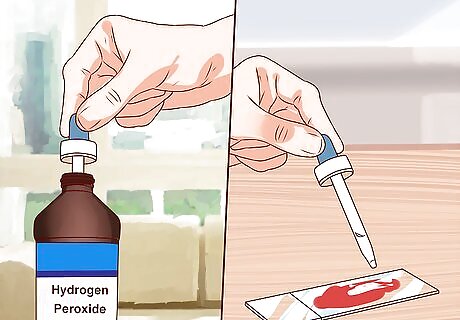
Drip hydrogen peroxide on the liquid. With the eyedropper, take up some of the hydrogen peroxide and drip it onto the blood. Again, the exact amount isn’t important. You will be able to see if the experiment is working right away. If you don’t have an eyedropper, you can use a cotton swab soaked with hydrogen peroxide and rub it into the sample. Test the same sample multiple times to make sure you get the same results.
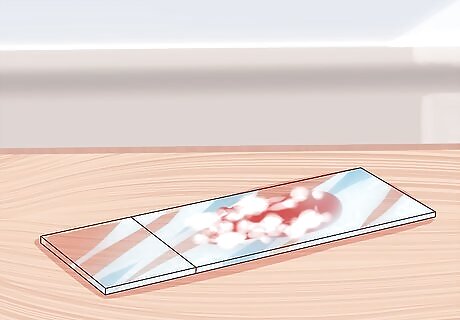
Watch for the presence of bubbles. When a substance that is catalase positive is exposed to hydrogen peroxide, it will bubble rapidly. Because blood contains catalase, if your sample is real blood, it should immediately start to bubble. If the sample doesn’t bubble, it isn’t blood. If the sample does start to bubble, you still can’t be totally sure it is blood, but this is a good step forward in determining that it is blood.

Know the limitations. Catalase is present in many living organisms such as plants and bacteria. Using hydrogen peroxide to do a catalase test is not very specific because of this. It’s important to recognize that even through a substance tests positive for catalase, that doesn’t mean it is actually blood. You can use the catalase test as a first step. If it tests positive, you can move forward with more specific tests. This method is also not very good for detecting dilute concentrations or small amounts of blood.
Using the Kastle-Meyer Test

Gather the necessary materials. This test relies on the fact that blood has iron in the form of hemoglobin. When phenolphthalein (colorless) and hydrogen peroxide come into contact with the iron in the blood, the phenolphthalein gets oxidized and turns pink. To perform this test, you will need hydrogen peroxide, rubbing alcohol, cotton swabs, phenolphthalein, a small eyedropper, gloves, and the sample to be tested. Phenolphthalein cannot be obtained in stores and must be purchased online. It is easiest to purchase a “Kastle-Meyer Test Kit” as it will contain all of the necessary resources. The standard strength 3% hydrogen peroxide is sufficient for this test. The small eyedropper is optional, it just makes it easier to apply the solutions to the cotton swab. Always wear gloves when working with biological substances like blood.
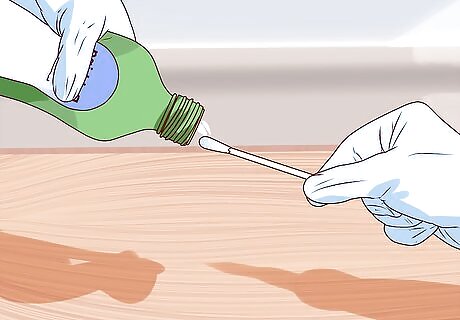
Apply a few drops of rubbing alcohol to the cotton swab. Using the eyedropper, drip a few drops of alcohol onto the swab. Alternatively, fill a small cup with the rubbing alcohol and briefly dip the swab into it. The swab doesn’t need to be soaked, it just needs to be moist. The alcohol increases the sensitivity of the test by making the hemoglobin more exposed.

Rub the unknown substance on the cotton swab. With the damp cotton swab, rub it against the substance 4-5 times. You want to make sure a sufficient amount of the substance is on the swab. If your sample is dry or you don’t have much to work with, you can cut up the fabric into smaller pieces and test that directly. Get the piece damp with rubbing alcohol and proceed to the next step. You only need a very small piece to work with: the size of a fingertip should be sufficient.
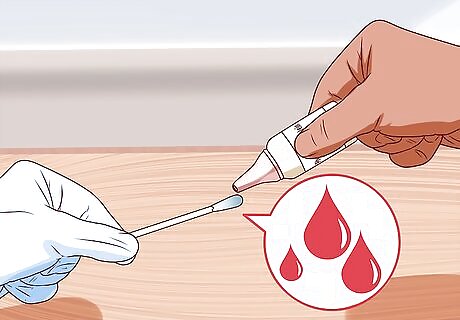
Apply a few drops of the phenolphthalein solution to the swab. One or two drops is more than enough for each swab. Be sure to add all of the solutions in the correct order or the test will not work properly. If you are working with the cloth directly, add the phenolphthalein directly onto the cloth.
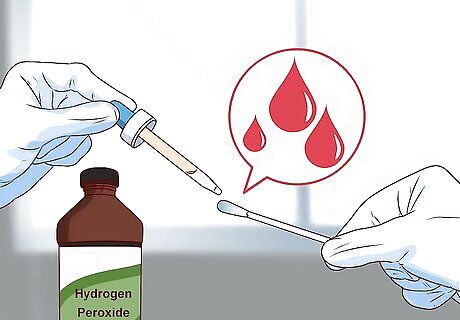
Drip a few drops of hydrogen peroxide to the swab. Again, one or two drops is more than enough. As soon as you add the hydrogen peroxide you may start to see the color change. The hydrogen peroxide reacts with the phenolphthalein and any iron present in the substance. Again, drip the hydrogen peroxide directly onto the small piece of cloth.
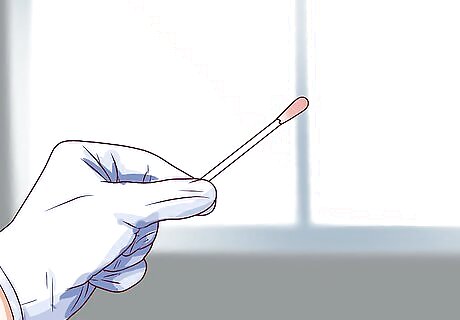
Watch to see if the swab turns pink. If the sample is blood, the swab should turn pink within 10 seconds. If it doesn’t change or changes after 10 seconds, the test is negative and the sample does not contain blood. Try testing your sample multiple times to see if you get the same result. Again, make sure you have added all of the reagents to the sample in the correct order. This could be a source of error if you are quite certain you have blood, but the test comes back negative.

Know the limitations. Just like the catalase test, this test has many limitations. It is often called a “presumptive” test because you cannot guarantee that it is blood and you definitely cannot tell if it is human blood. This test is prone to false positives because many vegetables and some metals will also react. Further analysis of the sample is necessary once you have a positive from this test.



















Comments
0 comment